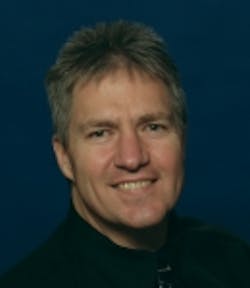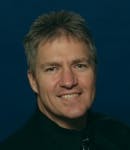The story of Nikola Tesla — Waverunner — Part 6
“I had a veritable mania for finishing whatever I began,” he says, “which often got me into difficulties. On one occasion, I started to read the works of Voltaire when I learned, to my dismay, that there were close on one hundred large volumes in small print which that monster had written while drinking seventy-two cups of black coffee per diem. It had to be done, but when I laid aside the last book I was very glad, and said, ‘Never more!’”
It is precisely this tenacity, this inability to quit, that propelled Tesla to many of his greatest achievements. Where others would be inclined to give up, Tesla kept plugging away, unable to stop until he reached his goal. This must have made it all the more difficult when Tesla had to declare bankruptcy, all but ending his hopes of establishing a global wireless power system.
Tesla actually had one more shot at his dream after the demise of the Wardenclyffe project. He joined a team of engineers working for Telefunken, a German company. Telefunken owned and operated a wireless transmitter on Long Island, and granted Tesla an opportunity to run a few experiments in exchange for his time. This last ray of hope was extinguished in 1917 when U.S. Marines seized and dismantled the facility to prevent German spies from using it during the war.
Later that year, Tesla published a paper describing in detail the device he proposed to the U.S. government to detect ships at sea. He had worked out the entire design down to the operating frequency and power level. His ideas were neglected, however, until 1934, when French engineer Emile Girardeau began building radar systems “conceived according to Tesla's principles” and later employed to defend Paris against German air attacks.
War had a profound effect on Tesla. He was opposed to it, but he was even more against the advance of evil dictators. This may be one reason why he resumed his work on radar. It might also explain why he became fascinated with what he described as a “death ray,” trying unsuccessfully to convince the English in the 1920s to fund its development.
Another defense-related idea, which the inventor carried even further, was a da Vinci-like flying machine, a cross between a helicopter and an airplane. Tesla's “Apparatus for Aerial Transportation” is remarkably similar to today's vertical takeoff and landing (VTOL) planes, or tiltrotors. Tesla said, if built, the aircraft would weigh 800 lb, rise from a small platform, and sell for about $1,000. It would benefit both military and civilian causes. Tesla was awarded a patent on his design in 1928, but couldn't raise enough money to build a prototype.
Three years later, marking the occasion of his 75th birthday, Tesla made the cover of Time magazine. Time reporters found him in the Grosvoner Clinton Hotel in New York living on the goodwill of the manager after having been evicted from several other places. Tesla moved out shortly after that, forfeiting his luggage to cover unpaid bills.
Word of Tesla's plight reached the Yugoslavian government, which intervened, granting its impoverished son a small pension on which to live. One official attempted to convince American companies to supplement Yugoslavia's gift, but Tesla refused the assistance, choosing to survive on the $7,200 annual stipend and whatever else he could earn as a consultant.
Tesla remained active throughout his 70's and into his 80's, but in 1937, he was struck by a taxi cab while crossing a street. Although his health began to decline, his mind remained sharp as ever. In fact, on his 81st birthday, he issued a statement claiming that he had worked out a dynamic theory of gravity that would disprove Einstein's notion of curved space. Tesla believed that energy was not contained in matter, but in the spaces between the particles of matter. He also maintained that wave theory could explain the observable forces of nature. Although he never published his unified field theory, modern thinking suggests gravitational waves exist and that they behave like sound, light, and other known waves.
On his 84th birthday, in 1940, Tesla made another incredible claim. Talking to a writer for the New York Times, he said he was ready to divulge the secret of a weapon that could melt airplane engines from a distance of 250 miles and create an invisible wall around the nation. “I have devoted much of my time during the year,” he said, “perfecting a compact apparatus by which energy in considerable amounts can now be flashed through interstellar space without the slightest dispersion.”
Two and a half years later, on Friday, January 5, 1943, the 86-year-old Tesla phoned the U.S. War Department, offering them the plans for his “teleforce” weapon. He was told he would hear back from a Colonel Erskine, who never returned the call. That evening, Tesla asked not to be disturbed and retired for the night. He was staying at the Hotel New Yorker and was quite ill by this time, suffering regular dizzy spells because of his weak heart.
On Monday morning, January 8, 1943, a hotel maid discovered that Tesla had passed away sometime over the weekend. The time and date of his death are uncertain; the cause: heart failure. More than two thousand people attended his funeral, which was held at the Cathedral of St. John the Divine. His body was then cremated and his ashes taken to Belgrade, Yugoslavia.
Although Tesla was a U.S. citizen, after his death, the Office of Alien Property impounded his papers under orders of the Federal Bureau of Investigation. The writings were declared to be top secret, and only after an international struggle were some of them released to a nephew living in the U.S. Shortly thereafter, in June of 1943, the U.S. Supreme Court ruled in Tesla's favor in the case against Marconi, reinstating his patent and recognizing him, once and for all, as the true inventor of radio.
In the decades since his passing, Tesla has been proven right more often than not. He was right on gravity waves, as scientists learned in the 1980s. He was right on the resonant properties of the earth and its atmosphere. And he was right on high-energy weapons and shields now under development around the world.
Tesla's death ray and teleforce, in fact, trace directly to the High Frequency Active Auroral Research Program, or HAARP, which the U.S. Department of Defense embarked on in 1993. The three key patents on which the program is based — having to do with altering various regions of space — have been issued as improvements on Tesla's patents stemming from his Colorado work.
Tesla may be gone, but his work and contributions to mankind live on. He knew that would be the case, too, and it clearly instilled him with joy. Tesla once said, “I continually experience an inexpressible satisfaction from the knowledge that my polyphase system is used throughout the world to lighten the burdens of mankind and increase comfort and happiness, and that my wireless system, in all its essential features, is employed to render a service to and bring pleasure to people in all parts of the world.” This is his legacy; it's really all he wanted.
About the Author
Larry Berardinis
For more than two decades, Lawrence (Larry) Berardinis served on Machine Design and Motion System Design magazines as an editor and later as an associate publisher and new-business development manager. He's a member of Eta Kappa Nu, and holds an M.S. in Solid State Electronics. Today, he is the Senior Manager of Content Programs at ASM International, formerly known as the American Society for Metals.

